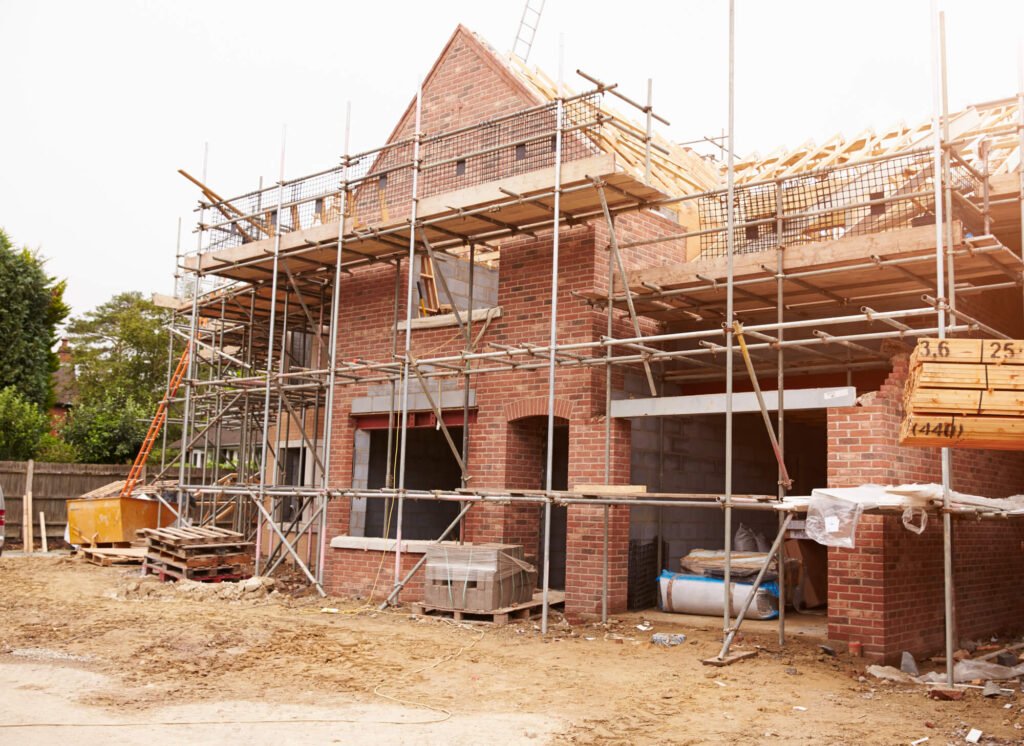Is scaffolding Value Added Tax exempt on new builds? Scaffolding is standard-rated because it requires erecting and dismantling, however, the supply of the labour for erecting and dismantling the scaffolding is VAT zero-rated. Scaffolding hire isn’t covered under the domestic reverse charge, hence, it should be accounted for under normal VAT rules.

You can easily identify your scaffolding VAT tax liability and whether there are any reverse charges applicable. Here you’ll also be able to avoid any errors when accounting for the reverse charge. You can be penalised by the HMRC for any deliberate errors when accounting for the reverse charges.
What influences the Value Added Tax (VAT) rate for new builds
According to the HMRC, the contract between the supplier and customer will determine the VAT liability when it comes to scaffolding supplies. The scaffold hire, erecting, and dismantling contract falls within the Construction Industry Scheme scope.
If the supplier decides to charge the cost of hiring scaffolding components separate from the erection and dismantling labour costs, labour will be VAT zero-rated. Labour is not liable to VAT because it’s a service carried out in relation to the construction of a new build. Here are several things you need to consider that will affect your VAT liabilities on your new build.
Intermediary suppliers and end-user
The contract between the scaffolding supplier and the customer will determine whether there will be any exemption from reverse charges for intermediary suppliers and end users. The supplier should verify whether their client is VAT and construction industry scheme registered or an end-user.
Unless there’s a written statement from the customer that they’re the end user, the supplier shouldn’t assume that they are. If the customer has indicated in writing they’re the end user, reverse charge will not apply to supplies made to them because they aren’t VAT registered.
Intermediary suppliers can also be exempted from reverse charges if they acquire construction services and supply them to a connected end-user without making any changes to the supplies.
If you’re working with a design and build company and they supply scaffolding, they’ll be considered intermediary suppliers. This means normal VAT rules will apply to the supplies bought in. If the design and build company isn’t connected to the end user, then reverse charges will apply to the supplies.

Source of labour
Knowing whether the labour supply or workers are from a labour-only business or an employment business is also crucial for VAT purposes. Employment businesses supplying workers for the construction aren’t subjected to reverse charges.
Labour-only businesses are subjected to the reverse charge because they’re supplying labour-only construction services. The reverse charges apply if the services being supplied are standard-rated, reduced-rated, and within the construction industry scheme scope.
Construction services supplied with other services or supplies
Construction services supplied with other goods should be treated as one supply for the purpose of determining the VAT. For such, reverse charges apply to the entire invoice value.
In summary, scaffolding VAT is not exempt on new builds. Scaffolding involves erecting and dismantling, therefore, scaffold hire is standard-rated, but the labour involved in erecting and dismantling the structure is VAT zero-rated. You also need to consider things like labour sources and intermediary suppliers, which ultimately influence how you account for VAT. It’s advisable to be diligent when accounting for your VAT liabilities to avoid any penalties by the HMRC for deliberate omissions.